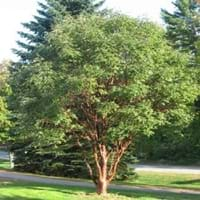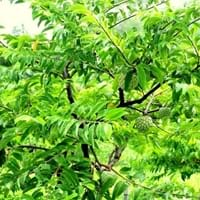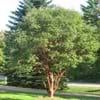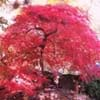Life Span
Perennial
Perennial
Origin
China
Caribbean, South America
Types
Not Available
Pinks Mammoth, African Pride, Late Gold, Geffner, Hilary White
Number of Varieties
Not Available
Habitat
Mixed deciduous forest
Warm and moist climatic conditions
USDA Hardiness Zone
4-8
10-13
Sunset Zone
2a, 2b, 3a, 3b, 4, 5, 6, 7, 8, 9, 14, 15, 16, 17, 18, 19, 20, 21
Not Available
Habit
Upright/Erect
Upright/Erect
Flower Color
Yellow
Yellow green
Flower Color Modifier
Bicolor
Bicolor
Fruit Color
Green
Light Green, Sea Green
Leaf Color in Spring
Dark Green
Light Green
Leaf Color in Summer
Dark Green
Light Green
Leaf Color in Fall
Red, Green, Bronze, Orange Red
Light Green
Leaf Color in Winter
Not Available
Light Green
Leaf Shape
Compound
oblong or narrow-lanceolate
Plant Season
Spring, Summer, Fall, Winter
Summer
Sunlight
Full Sun
Full Sun, Partial Sun
Type of Soil
Clay, Loam
Loam, Sand
The pH of Soil
Acidic, Neutral, Alkaline
Acidic, Neutral, Alkaline
Soil Drainage
Well drained
Well drained
Bloom Time
Spring
Early Summer, Summer
Tolerances
Not Available
Drought
Where to Plant?
Ground
Container
How to Plant?
Grafting, Seedlings
Seedlings
Plant Maintenance
Medium
Medium
Watering Requirements
Medium
Do Not over Water, Does not require regular watering
In Summer
Lots of watering
Lots of watering
In Spring
Moderate
Moderate
In Winter
Average Water
Average Water
Soil pH
Acidic, Neutral, Alkaline
Acidic, Neutral, Alkaline
Soil Type
Clay, Loam
Loam, Sand
Soil Drainage Capacity
Well drained
Well drained
Sun Exposure
Full Sun
Full Sun, Partial Sun
Pruning
Remove damaged leaves, Remove dead branches, Remove dead leaves
Prune young trees into an open vase shape
Fertilizers
All-Purpose Liquid Fertilizer
Nitrogen
Pests and Diseases
Red blotch
Anthracnose, Diplodia rot, Leaf spot
Plant Tolerance
Drought
Drought
Flowers
Insignificant
Insignificant
Flower Petal Number
Single
Single
Foliage Texture
Medium
Medium
Foliage Sheen
Matte
Matte
Attracts
Not Available
Fruit Bats
Allergy
Not Available
Oral Allergy
Aesthetic Uses
Showy Purposes
Not Available
Beauty Benefits
Not Available
Promotes Healthy Hair, Promotes healthy skin
Environmental Uses
Air purification
Air purification
Medicinal Uses
Not Available
Diabetes, Diarrhea
Part of Plant Used
Wood
Bark, Fruits, Seeds
Other Uses
Showy Purposes
Used to make hair tonic, Used to promote healthy blood flow during menstruation
Used As Indoor Plant
No
No
Used As Outdoor Plant
Yes
Yes
Garden Design
Feature Plant, Foundation, Mixed Border
Fruit / Fruit Tree, Shade Trees, Tropical
Botanical Name
ACER griseum
ANNONA squamosa
Common Name
Paperbark Maple
Sugar Apple
In Hindi
paperbark maple
सीताफल
In German
paperbark Ahorn
Zuckerapfel
In French
érable paperbark
Sugar Apple
In Spanish
arce paperbark
Manzana de azúcar
In Greek
Paperbark σφενδάμου
ζάχαρη της Apple
In Portuguese
de bordo paperbark
Pinha
In Polish
klon paperbark
Cukier Jabłko
In Latin
paperbark acernis
Sugar Apple
Phylum
Magnoliophyta
Magnoliophyta
Class
Magnoliopsida
Magnoliopsida
Order
Sapindales
Magnoliales
Family
Aceraceae
Annonaceae
Clade
Angiosperms, Eudicots, Rosids
Angiosperms, Magnoliids
Tribe
Not Available
Abreae
Subfamily
Not Available
Maloideae
Number of Species
Not Available
Not Available
Difference Between Paperbark Maple and Sugar Apple
If you are confused whether Paperbark Maple or Sugar Apple are same, here are some features about those plants to help you choose better. Many people think that these two plants have the same characteristics, but one can see Paperbark Maple and Sugar Apple Information and learn more about it. Fertilizers required for proper growth of Paperbark Maple are All-Purpose Liquid Fertilizer, whereas for Sugar Apple fertilizers required are Nitrogen. Hence, one should know the basic difference between Paperbark Maple and Sugar Apple if you are planning to have them in your garden to enhance its beauty.
<
Flowering PlantsImportance of Paperbark Maple and Sugar Apple
Want to have the most appropriate plant for your garden? You might want to know the importance of Paperbark Maple and Sugar Apple. Basically, these two plants vary in many aspects. Compare Paperbark Maple and Sugar Apple as they differ in many characteristics such as their life, care, benefits, facts, etc. Every gardener must at least have the slightest clue about the plants he wants to plant in his garden. Compare their benefits, which differ in many ways like facts and uses. The medicinal use of Paperbark Maple is Not Available whereas of Sugar Apple is Diabetes and Diarrhea. Paperbark Maple has beauty benefits as follows: Not Available while Sugar Apple has beauty benefits as follows: Not Available.
Compare Facts of Paperbark Maple vs Sugar Apple
How to choose the best garden plant for your garden depending upon its facts? Here garden plant comparison will help you to solve this query. Compare the facts of Paperbark Maple vs Sugar Apple and know which one to choose. As garden plants have benefits and other uses, allergy is also a major drawback of plants for some people. Allergic reactions of Paperbark Maple are Not Available whereas of Sugar Apple have Oral Allergy respectively. Having a fruit bearing plant in your garden can be a plus point of your garden. Paperbark Maple has no showy fruits and Sugar Apple has no showy fruits. Also Paperbark Maple is not flowering and Sugar Apple is not flowering . You can compare Paperbark Maple and Sugar Apple facts and facts of other plants too.





